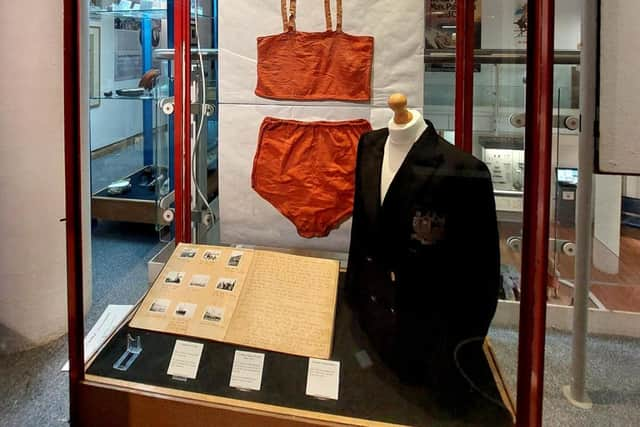English Channel's crossings history explored in new exhibit at Dover Museum including swimming and migration
and live on Freeview channel 276
A new exhibition charting the history of English Channel crossings has opened - including a look a endurance swims between France and the UK, and a look at migration.
The exhibit at Dover Museum features information and artefacts across an entire floor and charts the Channel's history as far back as the Bronze Age.
Advertisement
Hide AdAdvertisement
Hide AdThe exhibit at Dover Museum also explores perspectives including international trade and the development of maritime transport.
Pilgrimage, migration and the social history of the Channel are other important themes on display at the exhibit which has been curated with help from Dover District Council.
Cllr Charlotte Zosseder, DDC’s Cabinet Member with responsibility for museums and tourism, said: “The English Channel has had a remarkable influence on the development of Dover throughout the centuries. In many respects, it’s what put Dover on the map.


“As a community, we’re proud of our cross-Channel links and the warm welcome Dover has always provided to cross-Channel travellers. This exciting new exhibition is a great way to celebrate Dover’s pioneering spirit by taking advantage of its unique location as the UK’s closest town to continental Europe.”
Advertisement
Hide AdAdvertisement
Hide AdThe exhibit also explores conflict on the Channel - from the Roman invasion to World War I and World War II.
Ever since Captain Matthew Webb became the first person to successfully swim the Channel in August 1875, swimmers have been drawn to Dover to take on the ultimate test for endurance swimmers.
Dover Museum is excited to be partnering with the Swimming a Long Way Together project by visual artist and long-distance swimmer, Vanessa Dawes, to tell the fascinating story of Mercedes Gleitze, the first British woman to swim the English Channel in 1927.
Trading links across the English Channel go back at least as far as the Bronze Age. The Bronze Age Boat Gallery at Dover Museum houses the world’s oldest known seagoing boat, discovered in the town in 1992 and another reason to visit the exciting new exhibition.
Advertisement
Hide AdAdvertisement
Hide AdThe exhibition showcases the history of cross-Channel travel from Dover, in particular the development of the roll-on/roll-off ferry along with Great British inventions such as the hovercraft.
Dover Museum is owned and operated by Dover District Council. Founded in 1836 it is one of the oldest museums in Kent. Located in Dover’s Market Square, the museum’s exhibits are displayed across three floors with galleries telling the story of the development of the famous town and port. The Museum also includes the Dover Bronze Age Boat Gallery.
Admission to Dover Museum and the exhibition is free and open daily throughout the summer (9.30am-5.00pm Monday to Saturday, 10.00am-3.00pm on Sunday).
Comment Guidelines
National World encourages reader discussion on our stories. User feedback, insights and back-and-forth exchanges add a rich layer of context to reporting. Please review our Community Guidelines before commenting.
